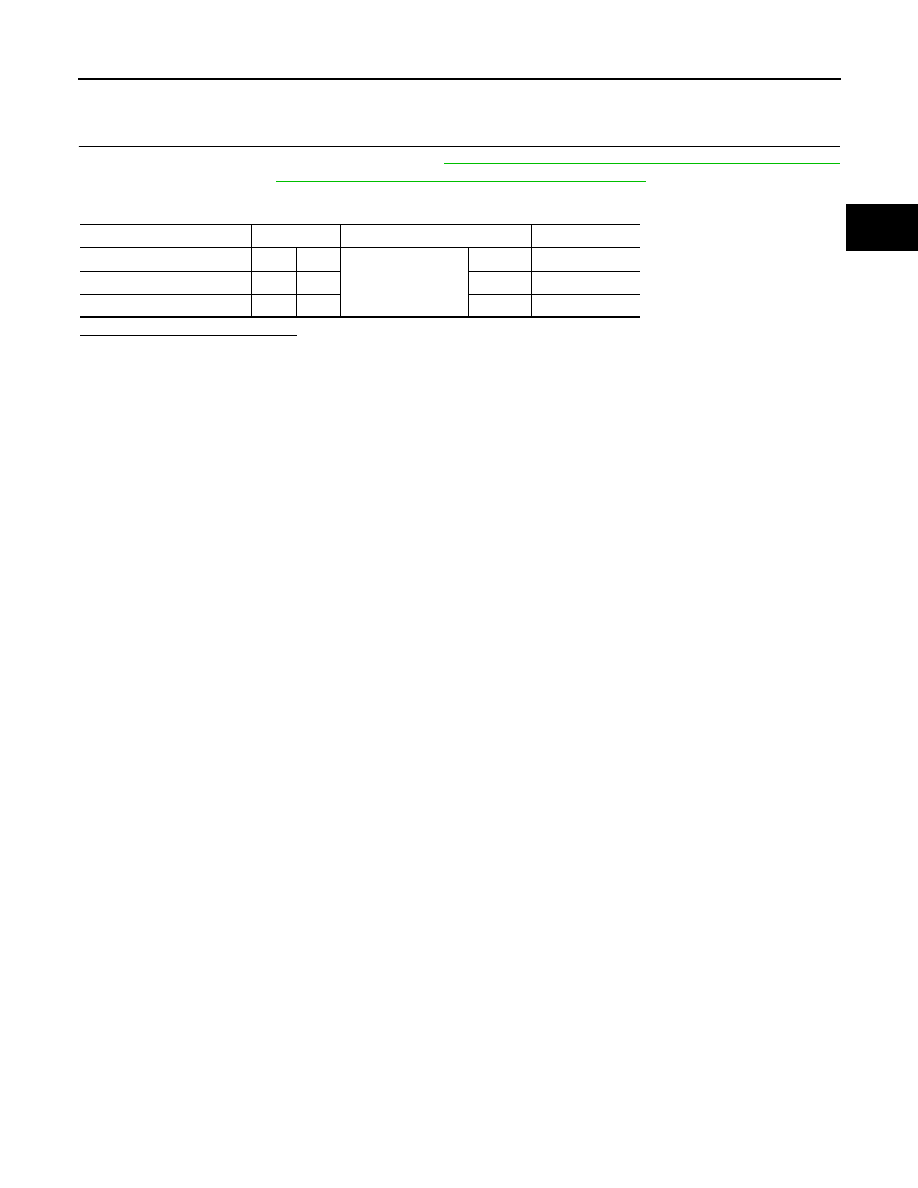Nissan Leaf. Manual - part 468

P33EB TEMPERATURE SENSOR
EVB-155
< DTC/CIRCUIT DIAGNOSIS >
D
E
F
G
H
I
J
K
L
M
A
B
EVB
N
O
P
Component Inspection
INFOID:0000000010121156
1.
CHECK BATTERY TEMPERATURE SENSOR
1. Remove battery temperature sensor. Refer to
EVB-222, "FRONT MODULE STACK : Exploded View"
(Front module stack) or
EVB-238, "REAR MODULE STACK : Exploded View"
(Rear module stack).
2. Check resistance between battery temperature sensor terminals.
Is the inspection result normal?
YES
>> INSPECTION END
NO
>> Replace battery temperature sensor.
Battery temperature sensor
Terminals
Condition
Resistance (k
Ω)
1
1
5
Temperature
°C (°F)
10 (50)
Approx. 7.4
2
4
3
25 (77)
Approx. 4.0
4
2
1
40 (104)
Approx. 2.3